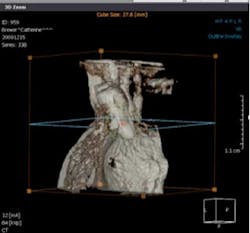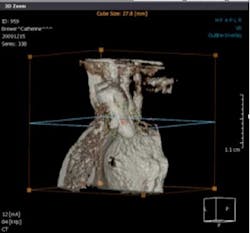Minimizing injection pain and stress
Professor, Department of Anatomical Sciences
University of the Pacific, Arthur A. Dugoni School of Dentistry
“In my practice, we use lasers, magnification, intraoral cameras, digital X-rays — all of the high-tech goodies. However, the VibraJect provides the best bang-for-the-buck in terms of doctor and patient satisfaction.”Dr. Don McNamara
Elkhart, INDr. Joe Blaes has a general practice in the St. Louis area. He is known for his expertise in the dental materials and techniques and his innovative systems designs. He writes and lectures on "How to Increase Productivity and Profitability." Dr. Blaes is a member of the American Academy of Dental Practice Administration.Dr. Blaes wrote: “If you saw this product on an exhibit floor at a meeting, you probably would walk right by and not even give it a second look. In the case of VibraJect that would be a mistake.”Joseph A. Blaes, DDS
St. Louis, MOThe VibraJect product’s fundamental operating principleVibraJect clips easily onto the barrel of aspirating and intraligamental dental syringes (and some disposable syringes) and vibrates the needle at a high frequency while injections are administered.Its effectiveness is based on the Gate Control Theory of nerve function proposed in 1965 by psychologists Ronald Melzack and Patrick Wall. In short, the theory suggests that oral nerve endings sense vibrations first and then cannot transmit feelings of pain. So the vibrations essentially block your patients' discomfort, putting them at ease during even the most dreaded injections.Two VibraJect product models are available from ITL DENTALThe two available VibraJect models are the VJ2002 with replaceable 1.5 volt batteries (Fig. 1) and the VibraJect VJR3R (Fig. 2) with rechargeable batteries. Clinicians who administer 50 shots or more per week get the best value from using the rechargeable VJR3R.
- Reduction of the stress and pain associated with oral injections
- Ease of use with no learning curve for the clinician and VibraJect’s operation
- Low equipment expenditure
- Reduction of injection time not having to wait for topical to take affect
- Low per-injection cost
- Practice building due to “comfortable injection” referrals
- Appointment cancellation and complaint reduction
- Builds revenues and patient base
Studies confirm VibraJect® effectiveness
Two independent studies have confirmed the effectiveness of the VibraJect Dental Needle Attachment to block the pain of dental injections. The purpose of these two studies was to confirm and document the effectiveness of VibraJect in blocking the pain resulting from dental injections and its effectiveness against CCLAD devices.
The first study by Fred Quarnstrom, DDS, et al. dealt with pain level comparisons resulting from usage of the Wand with those compared to usage of the VibraJect dental needle attachment.
Study #1 by Fred Quarnstrom, DDS, FASDA, FICD, FAGD (diplomate, American Board of Dental Anesthesiology, diplomate, National Board of Dental Anesthesiology), Sun Hee Bang-Pastore, DDS, Ruth Woldemicael, DMD, and David Chen, DDS, compared the VibraJect® to a computer-controlled injection device to control pain for injection of local anesthesia. Nineteen injections were done with the Wand handpiece of the CompuDent™ system by Milestone Scientific and 17 with the VibraJect by VibraJect LLC. Twenty-four were maxillary infiltrations and 12 were mandibular blocks. Patients reported the level of pain for the needle piercing their tissue, the injection of solution, and their overall evaluation of the injection.
This study’s conclusion stated: “This study tends to indicate there is little difference in the pain perceived by a dental patient when injected using the Vibraject as opposed to injecting with the Wand.”
Study #2 by Queens University, Belfast Ireland — The second study by Queens University statistically measured and compared the amount of pain reduction experienced by patients given block injections of local anesthesia using the VibraJect dental needle attachment, with block injections given to subjects using conventional injection methods. A Queens University study on 400 patients showed that VibraJect® statistically reduced the amount of “pain from 4.6 to 1.7 which has never been statistically achieved before VibraJect.” According to the Queen’s University study results: “Subjects receiving the conventional injection methods had a mean pain score of 4.6 (± 0.414) The VibraJect group had a mean pain score of 1.71 (±0.235)(P<0.05). Certain sites had larger decreases in the mean pain score using the VibraJect. These included the upper anterior segment infiltrations and lower right IDB injections.
P. PURRAY, K. TERRETT, E. LYNCH, and D.L. HUSSEY wrote this final conclusion to the Queens University Study: “The vibrating syringe attachment resulted in reduced pain levels on receiving intraoral injections.”
Botox/dermal filler injections
Botox and dermal filler injections have been recently introduced to the dental field and are performed by a growing number of dentists worldwide.
Botox injections can be used for dental treatments such as TMD and implantology. Dermal fillers can be used when dealing with asymmetrical lips, minimizing underlining skeletal discrepancies, and many other uses.
To administer Botox and dermal filler injections, the mouth and lip area need to be anesthetized. A common method is to give an infraorbital nerve block injection. This can be a painful injection if a device such as VibraJect is not used to block the pain.
Dr. Louis Malcmacher, a leading opinion leader for Botox and dermal filler injections for dentistry, has used VibraJect and provided this endorsement: “infraorbital and VibraJect is great for that and any regular dental injections.”
In summary
Dental clinicians are universally interested in eliminating appointment cancellations, minimizing no-shows for dental procedures, reducing patient complaints about injection pain with its associated stress, and eradicating the number of squirming, wiggling, and screaming children in their dental chairs. With the VibraJect®, dental professionals will see considerable reductions in such problems, resulting in more satisfied and relaxed patients.


